Диалоги проводятся с целью собрать все заинтересованные стороны по каждому речному бассейну для обсуждения совместных действий по рекам. Вот и в этот раз встретились водники из Кыргызстана, Таджикистана, Туркменистана, Казахстана, Узбекистана.
DROP BY DROP
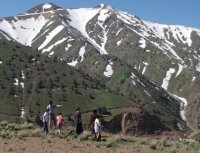 Мы продолжаем эксперимент с английским на sreda.uz. Русская версия была опубликована и называлась \»Пионеры капельного орошения\» water
Мы продолжаем эксперимент с английским на sreda.uz. Русская версия была опубликована и называлась \»Пионеры капельного орошения\» water
Uzbek farmers have traditionally relied on a system of canals and irrigation ditches to bring water to their crops; but with water increasingly scarce, many are turning to new drip-technology. Water-saving new technology in Central Asia
Water-saving new technology in Central Asia
Uzbek farmers have traditionally relied on a system of canals and irrigation ditches to bring water to their crops; but with water increasingly scarce, many are turning to new drip-technology.
First Time in the Fergana Valley
To get to the Fergana Valley you have to cross the Kamchik pass. The air is thin up here, and close to the snowfields are bright green slopes. The Fergana valley looks like a pear, cut in two by the Syrdarya river and its tributaries, and criss-crossed by the irrigation canals branching off them. Descending from the pass into the valley, the first thing you notice is the edge of the pear – empty steppe where no water reaches. The scarcity of water in the summer heat is palpable, even this close to region’s main water artery.
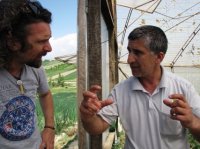 When Abdulvokhid Boltaboyev decided to set up a drip irrigation system on his farm, his neighbours were sceptical. Most people here are accustomed to using water carried by a system of irrigation ditches and channels from a nearby canal. But tradition has its drawbacks: when the ground is waterlogged, ground water rises carrying salt. At the height of summer the supply of water is greatly reduced, and the fields at the further end of the irrigation systems go unwatered. The deficit has started to cause tensions, with neighbours surreptitiously siphoning off one another’s supplies. As a result, the “battle for the harvest” ends with modest results.
When Abdulvokhid Boltaboyev decided to set up a drip irrigation system on his farm, his neighbours were sceptical. Most people here are accustomed to using water carried by a system of irrigation ditches and channels from a nearby canal. But tradition has its drawbacks: when the ground is waterlogged, ground water rises carrying salt. At the height of summer the supply of water is greatly reduced, and the fields at the further end of the irrigation systems go unwatered. The deficit has started to cause tensions, with neighbours surreptitiously siphoning off one another’s supplies. As a result, the “battle for the harvest” ends with modest results.
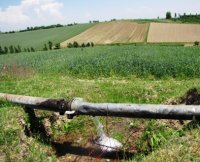 The yields from the land plots on the old river bed in the Uichinsky district of the Namangan region are not great. The river changed course long ago. But although the local farmers who divided up the former floodplain gathered and removed the stones from the dry river bed, the quality of the land remains poor.
The yields from the land plots on the old river bed in the Uichinsky district of the Namangan region are not great. The river changed course long ago. But although the local farmers who divided up the former floodplain gathered and removed the stones from the dry river bed, the quality of the land remains poor.
“It is not a place worth experimenting with,” the neighbours said. But Abdulvokhid thought differently. In 2009 he began to experiment with two different systems of drip irrigation on five hectares of cotton fields, and that Autumn he gathered 38 quintals of cotton per hectare. His neighbours brought in a maximum of 20.
 After gathering the harvest, Abdulvokhid went to China study that country’s experience with drip irrigation. In the end, he decided not only to use the system on his own land, but decided to set up his own business producing the systems in Uzbekistan.
After gathering the harvest, Abdulvokhid went to China study that country’s experience with drip irrigation. In the end, he decided not only to use the system on his own land, but decided to set up his own business producing the systems in Uzbekistan.
He took out a $92,000 bank loan to buy the equipment from China he needed to start production, and sought further support from the Global Environment Facility’s local branch in Tashkent.
The GEF launched small grants program in Uzbekistan in 2008, and it already supports more than 50 projects dealing with biodiversity, climate change adaptation, and land degradation. Like all applicants, Abdulvokhid was expected to put own finances into the project too: the fund will only provide co-financing, covering no more than 50-percent of the costs of a project.
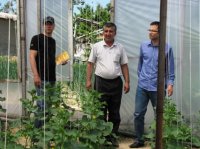 When Abdulvokhid invited experts from the GEF grants program to see how drip irrigation working on his fields, they came away impressed. They found that he’d achieved significant savings in water and fertiliser and halved his average electricity consumption.
When Abdulvokhid invited experts from the GEF grants program to see how drip irrigation working on his fields, they came away impressed. They found that he’d achieved significant savings in water and fertiliser and halved his average electricity consumption.
Thus the GEF launched a three year project called “Drip Irrigation in the Fergana Valley.” Abdulvokhid got a $50,000 grant to start production and buy raw materials. His contribution was equipment and a commitment to provide one hectare’s worth of drip irrigation free of charge to 20 farmers across the republic. In 2012, he started production.
Greenhouses on the Hills
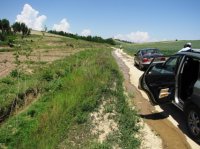 Along the northern channel of the Namangan canal, pumps steadily push water up to the hilly Adyrs. The Adyrs are the foothills of the Fergana valley, made up of the degraded material of the mountains. Although watering land on the Adyrs via irrigation ditches takes a great deal of water, the fields are still for the most part irrigated in the traditional way. The landscape is a patchwork of verdant hillsides painted with green wheat fields and brown arable land, a vineyard here, an orchard there.
Along the northern channel of the Namangan canal, pumps steadily push water up to the hilly Adyrs. The Adyrs are the foothills of the Fergana valley, made up of the degraded material of the mountains. Although watering land on the Adyrs via irrigation ditches takes a great deal of water, the fields are still for the most part irrigated in the traditional way. The landscape is a patchwork of verdant hillsides painted with green wheat fields and brown arable land, a vineyard here, an orchard there.
In one of these orchards, says Abdulvokhid, his father introduced drip irrigation to Uzbekistan for the first time when he used nails to drive holes into a hose in 1968. By attaching buttons in a cunning arrangement, the story goes, he was able to let water drip under the trees.
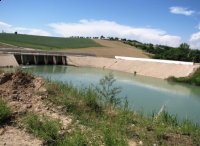 But there was little demand for drip irrigation in Soviet times. Water was plentiful, and the Toktogul reservoir upstream in Kyrgyzstan provided all the irrigation anyone needed. All the water accumulated over the winter flowed to the fields in summer. “When the Soviet Union collapsed, much changed. I got myself 70 hectares, became a farmer, But I found that when the crops needed water, there simply wasn’t enough. That’s when I remembered what my father had told me about drip irrigation,” recalls Abdulvokhid.
But there was little demand for drip irrigation in Soviet times. Water was plentiful, and the Toktogul reservoir upstream in Kyrgyzstan provided all the irrigation anyone needed. All the water accumulated over the winter flowed to the fields in summer. “When the Soviet Union collapsed, much changed. I got myself 70 hectares, became a farmer, But I found that when the crops needed water, there simply wasn’t enough. That’s when I remembered what my father had told me about drip irrigation,” recalls Abdulvokhid.
Amongst the first to decide to try out drip irrigation on the Adyrs and turn to Abdulvokhid for advice was Nosirzhon Saifullayev, who farms two hectares with onions, an orchard and a melon field. His hillside smallholding can now be easily identified by the two white plastic polytunnels, each at least 50 metres long.
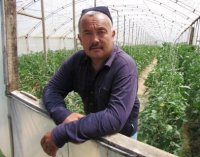 Nosirzhon started putting up the first of these green houses for vegetables last year. For the first three days he watered them through holes in the roofing material, but the water did not reach the back rows. It was at this point Abdulvokhid suggested he join the drip-irrigation project. Together they calculated the cost of installation, and put in the system in spring. The system is pretty simple: water is pumped from an irrigation ditch into a barrel at the top of the property, and gravity does the rest, guiding the water down tubes to the crops.
Nosirzhon started putting up the first of these green houses for vegetables last year. For the first three days he watered them through holes in the roofing material, but the water did not reach the back rows. It was at this point Abdulvokhid suggested he join the drip-irrigation project. Together they calculated the cost of installation, and put in the system in spring. The system is pretty simple: water is pumped from an irrigation ditch into a barrel at the top of the property, and gravity does the rest, guiding the water down tubes to the crops.
Nosirzhon wants to add another greenhouse, and he will plant his next crop in September, so he will be able to harvest tomatoes and cucumbers by New Year. “I’ve filled the barrel with five tons of water for insurance. My water consumption is lower now – it would be difficult to use any less. I dream of using drip irrigation on the whole farm,” he says.
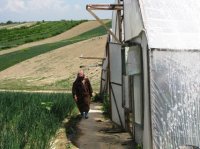 The GEF’s experts have confirmed the impressive water savings that can be made when irrigation is delivered drop-by-drop. According to Alexei Blokov, the head of the grants program in Uzbekistan, almost all the water reaches seedlings’ roots. “It is nearly 90 percent efficient. You can supply it from any local water source – springs, rivers, lakes. It cuts losses to evaporation during transportation from the source to crops. The system is very simple to use and cheap to install and service,” he says.
The GEF’s experts have confirmed the impressive water savings that can be made when irrigation is delivered drop-by-drop. According to Alexei Blokov, the head of the grants program in Uzbekistan, almost all the water reaches seedlings’ roots. “It is nearly 90 percent efficient. You can supply it from any local water source – springs, rivers, lakes. It cuts losses to evaporation during transportation from the source to crops. The system is very simple to use and cheap to install and service,” he says.
State support
Abdulvokhid, Nosirzhon, and many other farmers have already proved the potential of micro-irrigation, and the Uzbek government has taken notice. In the summer of 2013 the government passed a resolution to support adoption of the 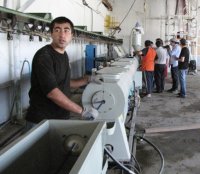 technology, including financing installation of drip-irrigation systems and other water saving technology. The plan is for drip irrigation to be introduced to all areas suffering from chronic water shortages, as well as land where the topography makes delivering water expensive. Priority will be given to orchards, vineyards, melon fields, and other high-profit crops.
technology, including financing installation of drip-irrigation systems and other water saving technology. The plan is for drip irrigation to be introduced to all areas suffering from chronic water shortages, as well as land where the topography makes delivering water expensive. Priority will be given to orchards, vineyards, melon fields, and other high-profit crops.
Some calculations suggest the new technology could save an average of 65 percent of the water currently used on cotton production and 54 percent of that used on fruit and vegetable cultivation, while at the same time increasing yields. Incentives already on the table include a special credit line by the Ministry of Finance’s land reclamation fund offering famers preferential-rate three year loans of up to $28,000, and the opportunity for farmers to use the volume of water they save on other fields. Other measures in the pipeline include exemptions from land tax and support for buying polytunnels.
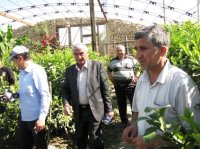 Drip irrigation supplied water to just 1,400 hectares of agricultural land in Uzbekistan in 2013, and is set to grow to 25,000 hectares by 2018. That is still only a fraction of the more than 3.5 million hectares of farmland in the country. But with water shortages and the pressures of climate change getting worse with each year, drip irrigation in Uzbekistan is promising, economically attractive, and environmentally friendly.
Drip irrigation supplied water to just 1,400 hectares of agricultural land in Uzbekistan in 2013, and is set to grow to 25,000 hectares by 2018. That is still only a fraction of the more than 3.5 million hectares of farmland in the country. But with water shortages and the pressures of climate change getting worse with each year, drip irrigation in Uzbekistan is promising, economically attractive, and environmentally friendly.
Nataliya Shulepina,
Photo by the author
sreda.uz
Russian version water
|
Добро пожаловать на канал SREDA.UZ в Telegram |
Еще статьи из Вода
Процесс присоединения к Конвенции ЕЭК ООН о трансграничном воздействии промышленных аварий не прост. Приходится решать много самых разных задач, начиная от инвентаризации опасных объектов до предотвращения загрязнения вод.
Водный кодекс Республики Узбекистан утвержден 30 июля 2025 года. Вступил в силу — 31 октября 2025 года. На сайте Министерства юстиции размещены тексты Водного кодекса на узбекском, русском и английском языках.
Чиновники обосновали отказ тем, что подавать жалобы на проект могут только жители той страны, которая получает финансирование на проект от Всемирного банка. Использована формальная причина, чтобы избежать обсуждения экологических и социальных проблем региона.
Вместе реагировать на вызовы — с такой инициативой «Команда Европы» обратилась к странам Центральноазиатского региона. Приоритетны вопросы воды, энергетики и изменения климата. При этом упор делается на усиление регионального сотрудничества.
Подписано Межправительственное соглашение о совместном управлении и рациональном использовании трансграничных водных объектов. Для реализации Соглашения будет создана Межправительственная казахстанско-узбекская комиссия.
На Конференции Сторон Протокола ЕЭК ООН по воде и здоровью в Будапеште подведены итоги за прошедший период и принят ряд важных решений по реализации в 2026-2028 годы. Репортаж из Будапешта — от SREDA.UZ.
В бассейне Арала реализуются 42 экологических проекта. Прорабатывается возможность запуска двух грантовых региональных проектов при поддержке Всемирного банка. Эти и другие вопросы обсуждены на Правлении МФСА.
Подписан Меморандум о взаимопонимании между Исполкомом МФСА и Международной комиссией по ирригации и дренажу.Представлена информация о подготовке первого Всемирного форума по водосбережению в Ташкенте.
Только что закончены репортажи из экспедиции от верховий до низовий Амударьи. Много фотографий не вошли в репортажи. Покажем вдогонку еще Амударью и пустыню Кызылкум.
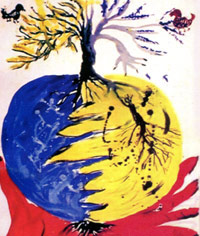











Совет директоров Всемирного банка отказался от расследования по Рогунской ГЭС
admin
Что-то вы слишком критичны. Это же не роман. Все понятно. По процедуре Всемирного банка рассматриваются жалобы из стран, где проект. Кто ж из таджиков будет жаловаться? А то, что страны ниже по течению будут недополучать воду в течение по меньшей мере десятка лет, пока заполнится водохранилище, банк не волнует.
Совет директоров Всемирного банка отказался от расследования по Рогунской ГЭС
Евгений
Какой канцелярско-невнятный стиль изложения .
Четыре истины для «Саммита правды»
Ангелина Борисовна Однолько
Эта публикация достойна того, чтобы её перепечатки все официальные и неофициальные СМИ. Главный вывод: все беды это результат БЕЗУДЕРЖНОГО ПОТРЕБЛЕНИЯ . Если бы наши деды увидели, что мы выбрасываем, не избежать нам их проклятия. Мы слишком быстро привыкли идти на базар без сумок и полотняных мешочков для круп, слишком быстро привыкли к горячей воде из крана, возненавидели любую жизнь рядом с домом, уничтожили всех , кто посмел ползать, прыгать и летать. К сожалению, мы, люди, изменимся только тогда, когда снова, как и тысячу лет назад , нам нужно будет предолевать голод, холод, жажду.
Линия защиты по стене и крыше от тех, кто «оттуда»
Ангелина
Странно, что мы еще можем три часа отстаивать законы государства. Странно, что мы еще пишем такие статьи. Странно, что мы можем в открытую снимать должностное лицо, совершающее преступление - кувалдой сбивающее чужой замок. В детском саду в этом случае говорили: а если я к тебе приду и стану замок на дверях сбивать? Странно, что в это же самое время проходят в нашей же стране международные встречи, конференции, до мировой общественности старательно доносится мысль: Узбекистан - правовое государство.
Заточить в темницы жителей ташкентских высоток — это лихо
Ангелина
У меня дома хранится очень интересный документ: штраф за сооружение крыльца, то есть входа, в частный дом, расположенный в районе одноэтажных домов возле базара Тезиковка на бывшей улице Чапаева, в котором жила моя бабушка. Сколько живу, так и не могу догадаться, каким образом некий надзорный орган в 40-ые годы смог обнаружить это крыльцо частного дома, расположенного внутри двора за забором более 2-х метром. Ситуация изменилась на 180 градусов. Теперь мы не можем найти этот надзорный орган, чтобы его сотрудники выглянули из окна и посмотрели на высотки, видные почти из любой точки Ташкента. Живу на 4-м этаже четырехэтажного дома. Год назад мой сосед воздвиг пятый этаж. Единственно, чего я добилась, чтобы на крышу поднялся руководитель Управляющей компании. Но он по его собственному признанию не является специалистом в строительстве. Так и живу со страхом - когда моя крыша не выдержит.
ДЫМИТ АНГРЕНСКАЯ СВАЛКА
Эколог
Наталия ШУЛЕПИНА sreda.uz, 28.6.2013г Пишу - 07.11.2025 год ....то что Вы писали все также или хуже.
Слабо помыть московские высотки в Ташкенте?
Ангелина Борисовна Однолько
Специально подходила и трогала руками в жаркий летний лень стены новостроек, покрытые прозрачным пластиком, похожим издалека на стекло. Руку держать даже секунду тяжело - очень горячо. А потом мы говорим, что стало жарко. Жарко не потому, что климат меняется , а потому что безграмотные строительные решения подогревают воздух, как в печке. Все больше стекла и бетона, который греется неимоверно. Все больше требуется энергии на охлаждение и отопление воздуха внутри. А люди, принимающие решения живут в загородных домах с садом и огородом и поливом в любое время суток.
На леднике Федченко (Ванчях) международная экспедиция установила летом 2025 года три автоматические станции
Ангелина
Какая красивая и глубокая метафора: ледник - это книга, которую надо успеть прочитать!!! Такая информация не просто радует, она заставляет вновь обрести веру в человечность, в неукротимую жажду познания. Не разрушение, а созидание - вот наш девиз. Наш - людей на планете Земля!!!
Амударья для биоразнообразия. Экспедиция по Узбекистану: от Бухары до низовий (часть 3)
Ангелина
Очень емкая экспедиция, требующая широкого кругозора в освещаемой теме. Слова восхищения автору - Наталье Шулепиной. Даже в праздники Вы не позволяете себе отдыхать! Меня же, как читателя, поразило насколько сложно устроена система водопользования. И второй тезис: никакие теории не помогают, никакие технологии не спасут, если воды просто НЕТ. Известно, что есть островные государства на Земле, которые всерьез задумываются о покупке земли на материке для своих граждан в связи с угрозой затопления. Не возникнет ли такая необходимость и в Узбекистане, если проживание в бывших низовьях Амударьи и Сырдарьи станет просто невозможным.
Ежи не будут ползать по жд-расписанию в Зарафшанском национальном природном парке
вован1
для прохода животных - под насыпью должны быть проложены широкие трубы. Как делается во всех цивилизованных странах